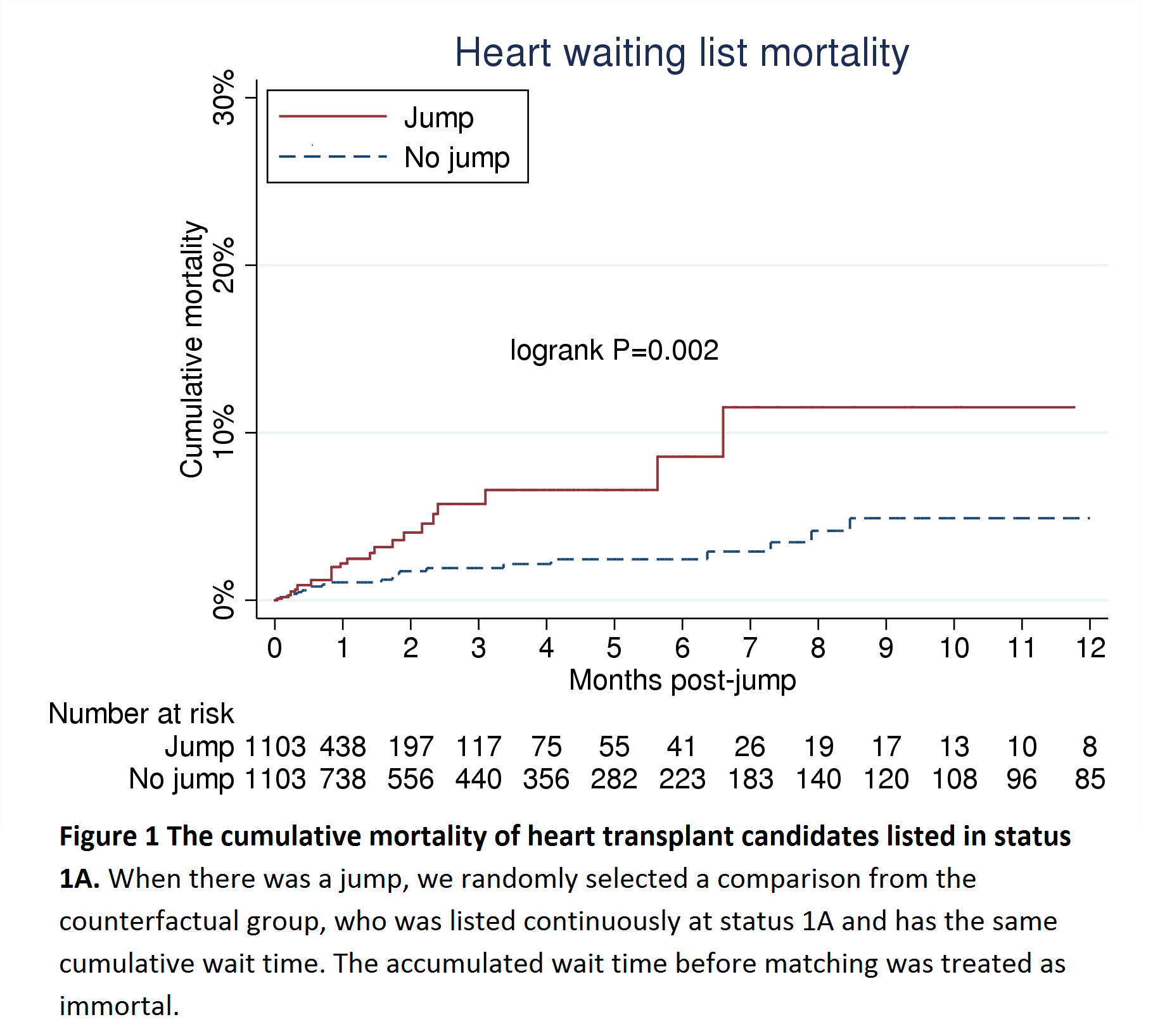Unfair Waiting Time Calculation? Impact of Accumulated Wait Time Restart with a Decrease in Status from 1A to 1B or 2 on Mortality of Heart Transplant Candidates
Department of Surgery, Johns Hopkins, Baltimore, MD
Meeting: 2019 American Transplant Congress
Abstract number: B95
Keywords: Allocation, Heart, Mortality, Public policy
Session Information
Session Name: Poster Session B: Heart and VADs: All Topics
Session Type: Poster Session
Date: Sunday, June 2, 2019
Session Time: 6:00pm-7:00pm
 Presentation Time: 6:00pm-7:00pm
Presentation Time: 6:00pm-7:00pm
Location: Hall C & D
*Purpose: Between two heart transplant (HT) candidates listed at the same status, the candidate with longer accumulated wait time receives higher waitlist priority; under current allocation policy, accumulated wait time restarts when a candidate moves to a higher status. Candidates who move from Status 1A to 1B or 2 and back to Status 1A (a “jump”) thus have lower priority for HT than those who remain listed continuously as Status 1A, but might still have the same, or even greater, urgency for HT and therefore might be disadvantaged by current allocation policy.
*Methods: Using SRTR data from 2013-2017, we identified 1,103 HT waitlist candidates who experienced a jump and compared them to a counterfactual cohort who remained listed as Status 1A (“no-jump”), censoring for downgrade in status (Status 1A to Status 1B or 2) and transplantation. In the counterfactual group, accumulated wait time before matching was treated as immortal. We used Cox regression to compare mortality between the two groups, adjusting for candidate age, race, gender, and blood type.
*Results: For candidates who experienced a jump, 3- and 6-month mortality was 5.8% and 8.7% respectively, compared to 1.9% and 2.4% for no-jump candidates (ranksum P=0.02). In an adjusted model, candidates who experienced a jump had 2.5-fold higher risk of waitlist mortality than those who did not (adjusted hazard ratio: 1.392.574.75).
*Conclusions: Status 1A HT candidates who moved to a lower status and subsequently re-listed as Status 1A experienced higher waitlist mortality compared to those continuously listed as Status 1A. Crediting these candidates for prior accumulated wait time at Status 1A might more accurately reflect their mortality risk.
To cite this abstract in AMA style:
Yu S, Kosztowski M, Waldram M, Segev DL, Massie AB. Unfair Waiting Time Calculation? Impact of Accumulated Wait Time Restart with a Decrease in Status from 1A to 1B or 2 on Mortality of Heart Transplant Candidates [abstract]. Am J Transplant. 2019; 19 (suppl 3). https://atcmeetingabstracts.com/abstract/unfair-waiting-time-calculation-impact-of-accumulated-wait-time-restart-with-a-decrease-in-status-from-1a-to-1b-or-2-on-mortality-of-heart-transplant-candidates/. Accessed December 21, 2025.« Back to 2019 American Transplant Congress

